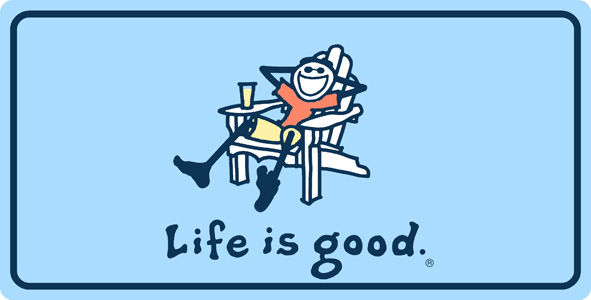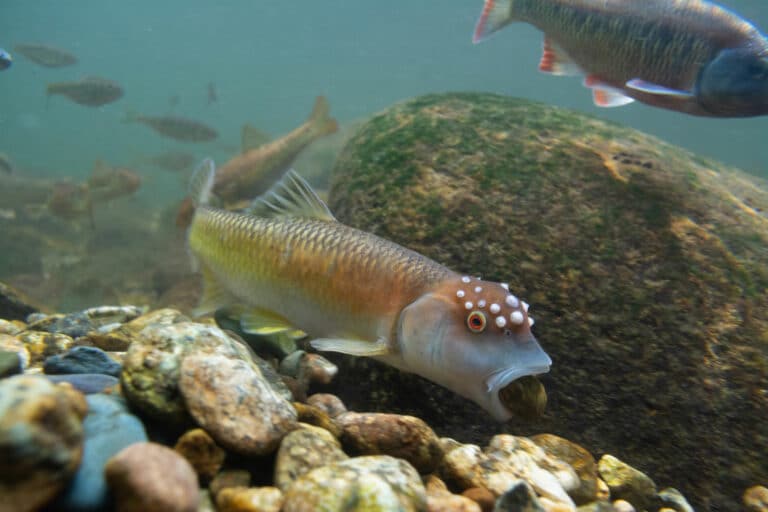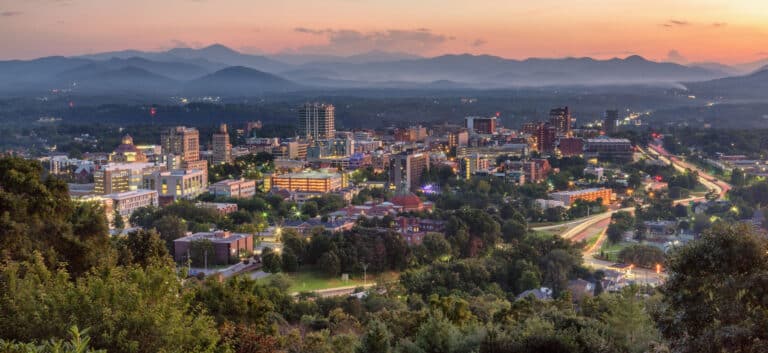For at least a decade or so, I’ve taken an exception to the ubiquitous “Life is Good” logo seen on bumper stickers, t-shirts, and hats. Started in 1994 by two brothers, the Life is Good Company now has annual revenues in excess of $100 million. The utterance “Life is Good” contains a wonderful spirit of optimism, and I’m all for that. But every time I see the logo, I can’t help but to think about the person sitting in traffic beside the sticker-laden Audi, heading to a minimum wage job, struggling to make ends meet and hold his or her family together. Isn’t this akin to smacking that person in the face and saying, “Wake up. Take control of your life. Pull yourself up by your bootstraps. Life is good, man. What’s wrong with you?”
Of course life is good. Considering the alternative, most of us choose it. But I am a fairly well-educated white man with a good job, healthy family, health care, warm house, and food on the table every night. I live on a 300-acre campus, about 200 acres of it wooded with oaks, tulip poplars, and pine trees. Sure, life is good for me, and good to me, but that’s not so for billions of others on the planet. And at what expense does my “good life” come to the planet and to the throngs of people for whom life is not so good?
A standard exercise for teachers and students of environmental science is to enter data into any number of websites for calculating one’s ecological footprint. The one I used this year was created by the Earth Day Network. My results from the quiz I took today are shown below; these are very consistent with those I have received over the past few years. [Click here to calculate your footprint.]
The shocking figure in this analysis is shown top left: “If everyone lived like you, we’d need 4.9 Planet Earths to provide enough resources.” Many of my students come in even higher than this–6, 7, 8 Earths to sustain the lifestyle they live–as they often fly, live in rather large houses, and buy a lot of consumer products. In class, we kind of weakly joke about how high the numbers are, and then move on, not thinking too much about the profundity of the number very deeply.
Just look at the carbon emitted by the things I do and the resources I consume: 23.2 tons of CO2, which is just about the American average, but five times the world average. [Read this older but relevant article about why a homeless person in the U.S. has an ecological footprint double that of the world average.] Carbon emissions are the main culprit of global climate change (no matter what Scott Pruitt says), which is already creating dire consequences for people and ecosystems around the world. Consider drought in Africa, bleaching of the coral reefs, rising sea levels, etc. We cannot look the other way–the way we live comes at a price to society and the world.
During a recent workshop I ran for Asheville School students on Environmental Justice, I explored the EPA’s excellent software created for this purpose (https://www.epa.gov/ejscreen). I looked at the area immediately surrounding Duke Energy’s Lake Julian Power Station, located just south of Asheville. Zooming in on the area and picking just a quick set of search criteria reveals something that is both shocking and somewhat expected: The fine particles PM2.5 index in the adjacent neighborhood is between the 80th and 90th percentile (which means that these people are exposed to very high levels of fine particles, relative to other Americans), and at least 75% of the neighborhood is made up of minorities. (Some health effects of high exposure to fine particles include irritation of the eyes, nose, and throat; reduced lung function; irregular heartbeat; and asthma attacks.) The bottom line: Minorities are living in a more-polluted-than-ours neighborhood while we enjoy the coal-fired electricity to charge our cell phones.
So, yeah, life is good, if we don’t think too much about it. But if we do, we must recognize that life is a struggle for many people, and that our lifestyles do contribute to the problems others experience. One small step we can all take is to work conscientiously to lower our ecological footprint by, for example, driving less (or at least driving a fuel-efficient car), eating less red meat, and buying fewer consumer products. We can demand environmental protection of our state and federal governments. And, (the elephant in the room) we can join the movement that’s demanding that our federal government address global climate change by making real progress towards a carbon-free future, instead of kowtowing to fossil fuels behemoths. Join me and thousands of others for the Peoples’ Climate March on April 29.







